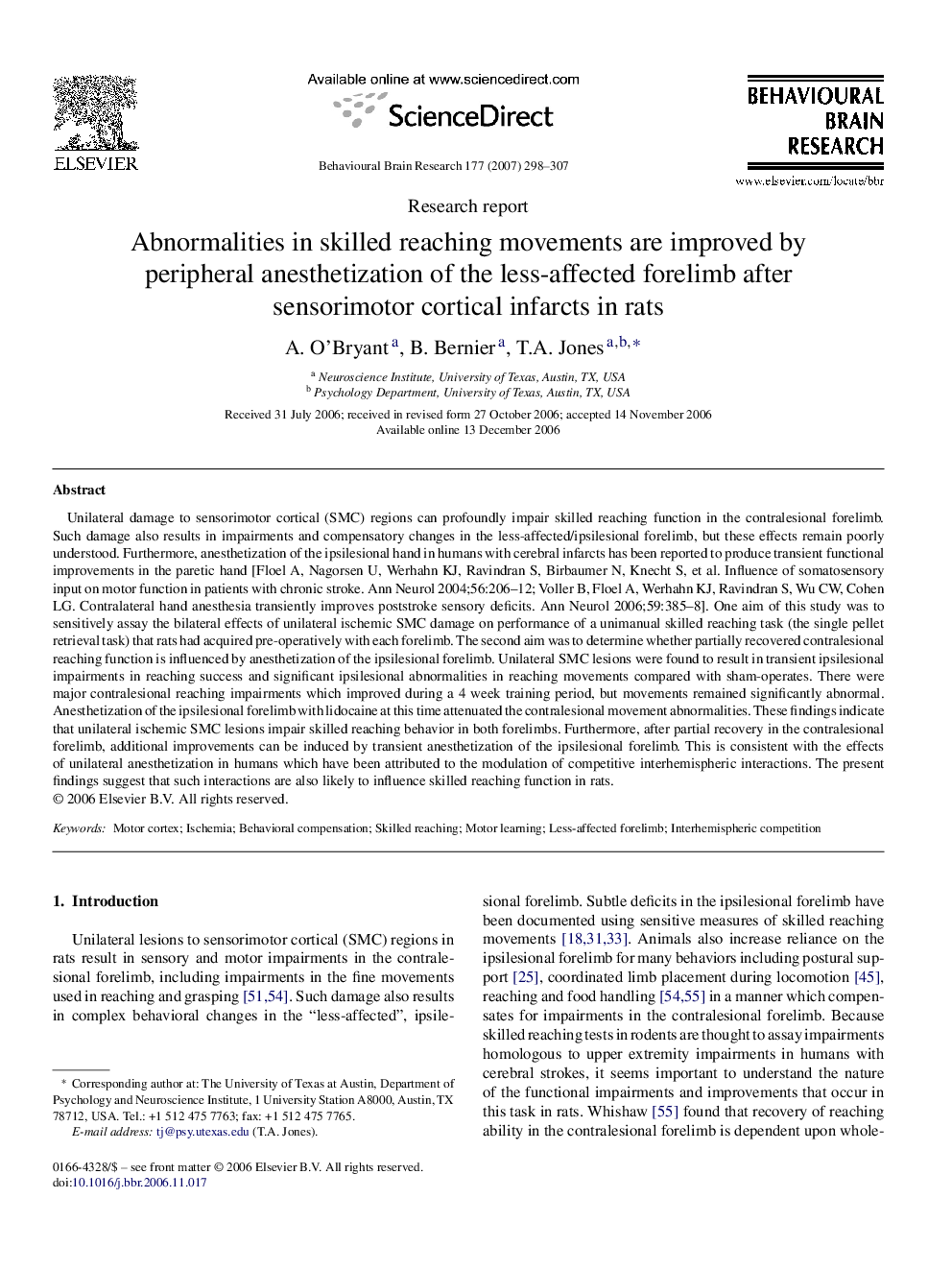| Article ID | Journal | Published Year | Pages | File Type |
|---|---|---|---|---|
| 4315985 | Behavioural Brain Research | 2007 | 10 Pages |
Unilateral damage to sensorimotor cortical (SMC) regions can profoundly impair skilled reaching function in the contralesional forelimb. Such damage also results in impairments and compensatory changes in the less-affected/ipsilesional forelimb, but these effects remain poorly understood. Furthermore, anesthetization of the ipsilesional hand in humans with cerebral infarcts has been reported to produce transient functional improvements in the paretic hand [Floel A, Nagorsen U, Werhahn KJ, Ravindran S, Birbaumer N, Knecht S, et al. Influence of somatosensory input on motor function in patients with chronic stroke. Ann Neurol 2004;56:206–12; Voller B, Floel A, Werhahn KJ, Ravindran S, Wu CW, Cohen LG. Contralateral hand anesthesia transiently improves poststroke sensory deficits. Ann Neurol 2006;59:385–8]. One aim of this study was to sensitively assay the bilateral effects of unilateral ischemic SMC damage on performance of a unimanual skilled reaching task (the single pellet retrieval task) that rats had acquired pre-operatively with each forelimb. The second aim was to determine whether partially recovered contralesional reaching function is influenced by anesthetization of the ipsilesional forelimb. Unilateral SMC lesions were found to result in transient ipsilesional impairments in reaching success and significant ipsilesional abnormalities in reaching movements compared with sham-operates. There were major contralesional reaching impairments which improved during a 4 week training period, but movements remained significantly abnormal. Anesthetization of the ipsilesional forelimb with lidocaine at this time attenuated the contralesional movement abnormalities. These findings indicate that unilateral ischemic SMC lesions impair skilled reaching behavior in both forelimbs. Furthermore, after partial recovery in the contralesional forelimb, additional improvements can be induced by transient anesthetization of the ipsilesional forelimb. This is consistent with the effects of unilateral anesthetization in humans which have been attributed to the modulation of competitive interhemispheric interactions. The present findings suggest that such interactions are also likely to influence skilled reaching function in rats.
